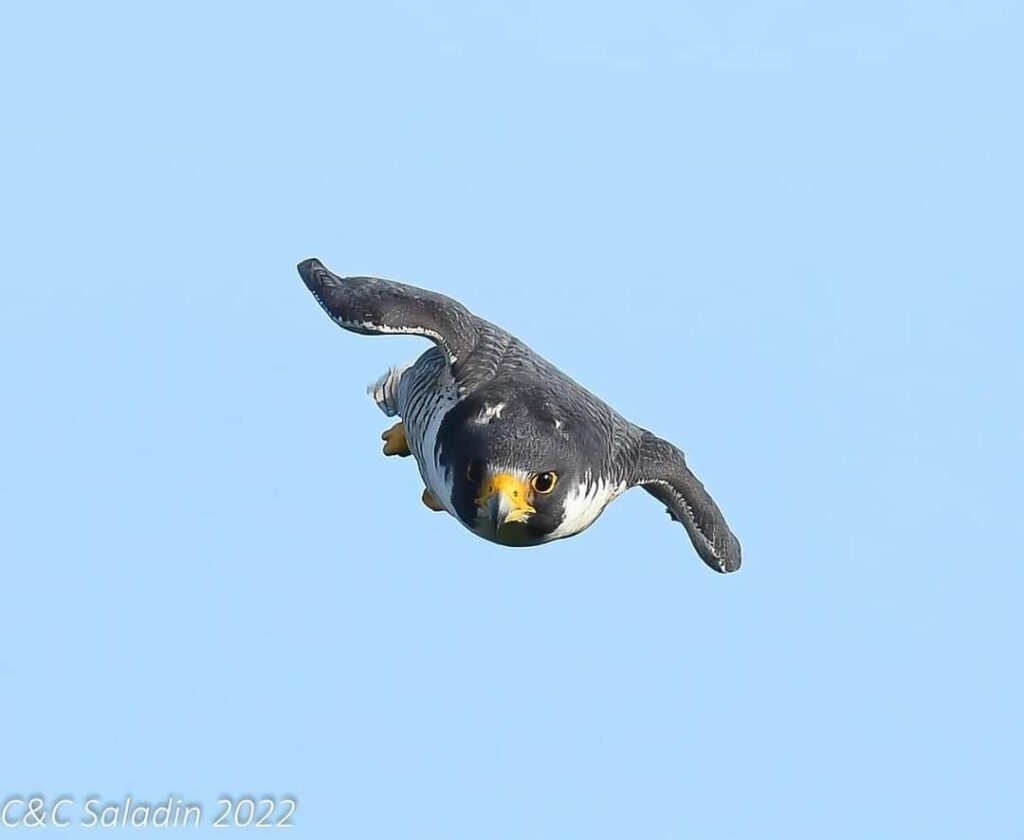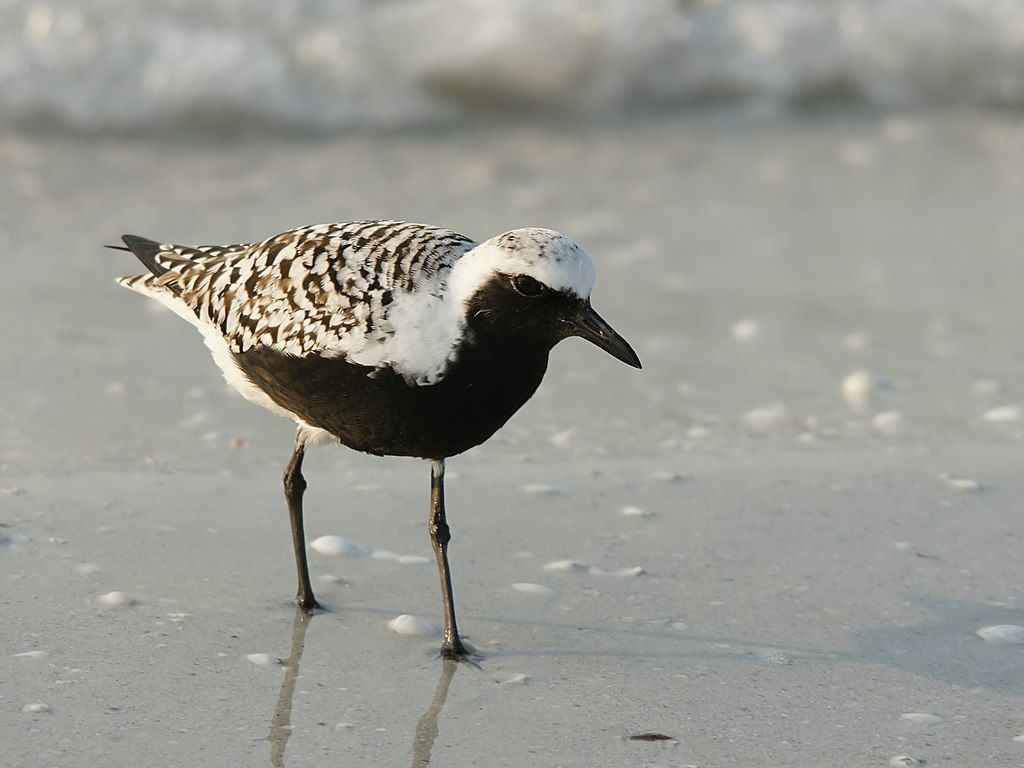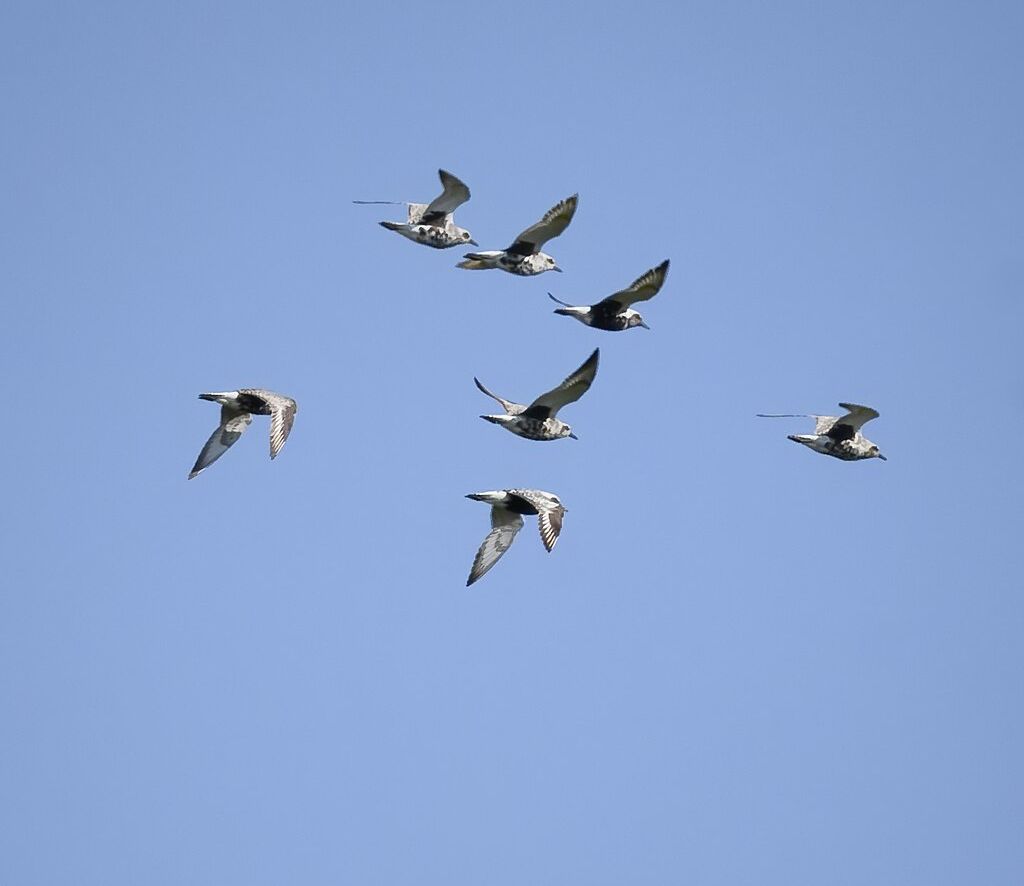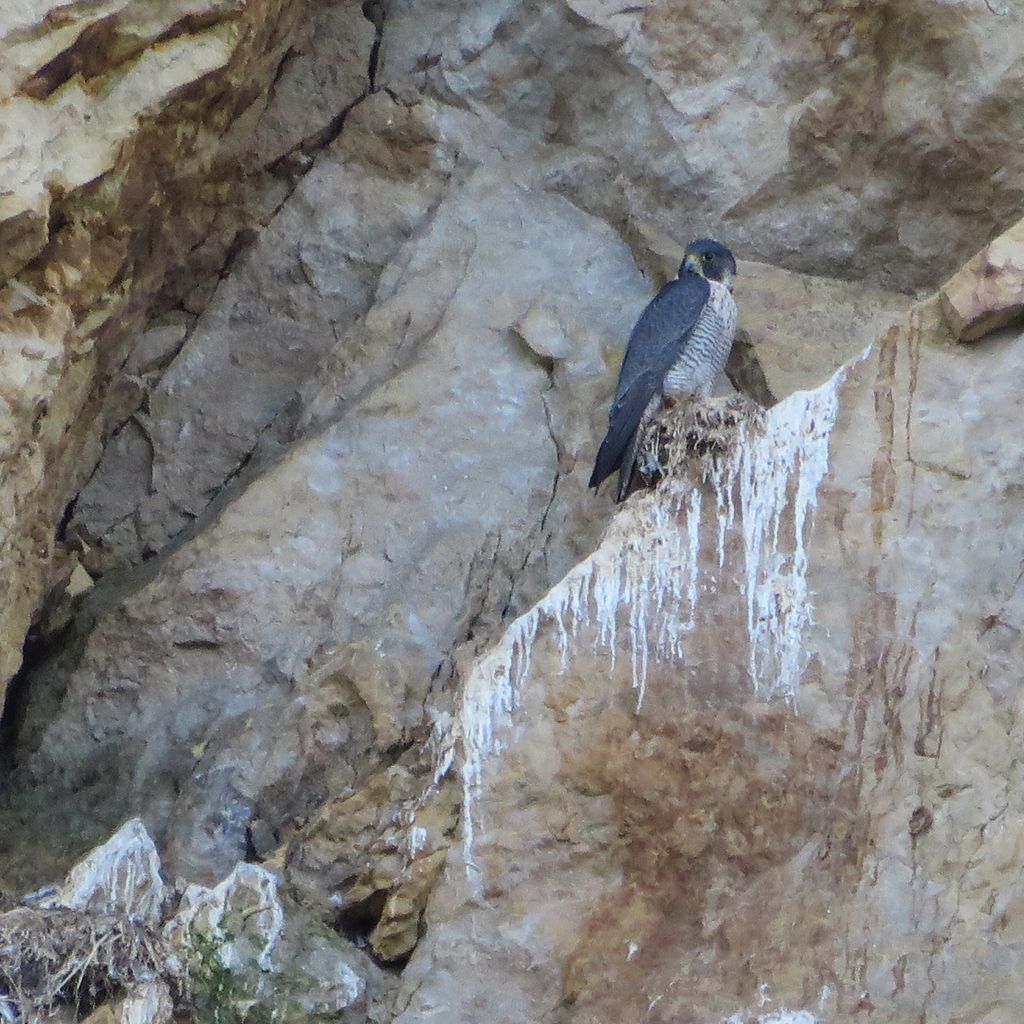
27 October 2024
This week the New York Times described A Feathered Murder Mystery at 10,000 Feet which I cannot resist retelling because peregrines are involved. My story will be in photos none of which are from the real episode. See actual photos and the full story at the link above.
In early 2023 scientists from the University of Amsterdam attached satellite trackers to eight black-bellied plovers that were wintering in the Netherlands (a.k.a. grey plovers, Pluvialis squatarola). The goal was to find out where they breed in the Arctic. Here’s what one looks like in spring.

In late May 2023 the birds were migrating northwest over Sweden at almost 10,000 feet when one of them abruptly changed direction 180 degrees, descended to near sea level and completely stopped moving. When a tracking device sends that kind of news, the bird is dead.

The scientists, led by Dr. M.P. (Chiel) Boom, went to Sweden to retrieve the tracker and found it on a ledge in an old quarry.

650 feet away from the abandoned tracker was a peregrine nest. (Chances are very good that the scientists did NOT visit during nesting season but the whitewash left on a cliff is a clear indication of who was there in late May.)

The plover died during peregrine breeding season when there were probably young peregrines in the nest so the father bird went hunting high above where the food was flying.
It’s not a surprise that plovers fly so high — some species fly even higher on migration — but it is a surprise that peregrines hunt at 10,000 feet. The plover’s tracker provided the first documented evidence.
Just when we think we know everything about peregrines, they surprise us again.
p.s. Please keep in mind that none of these photos are from the actual event!
Amazing birds, thanks for sharing, Kate!